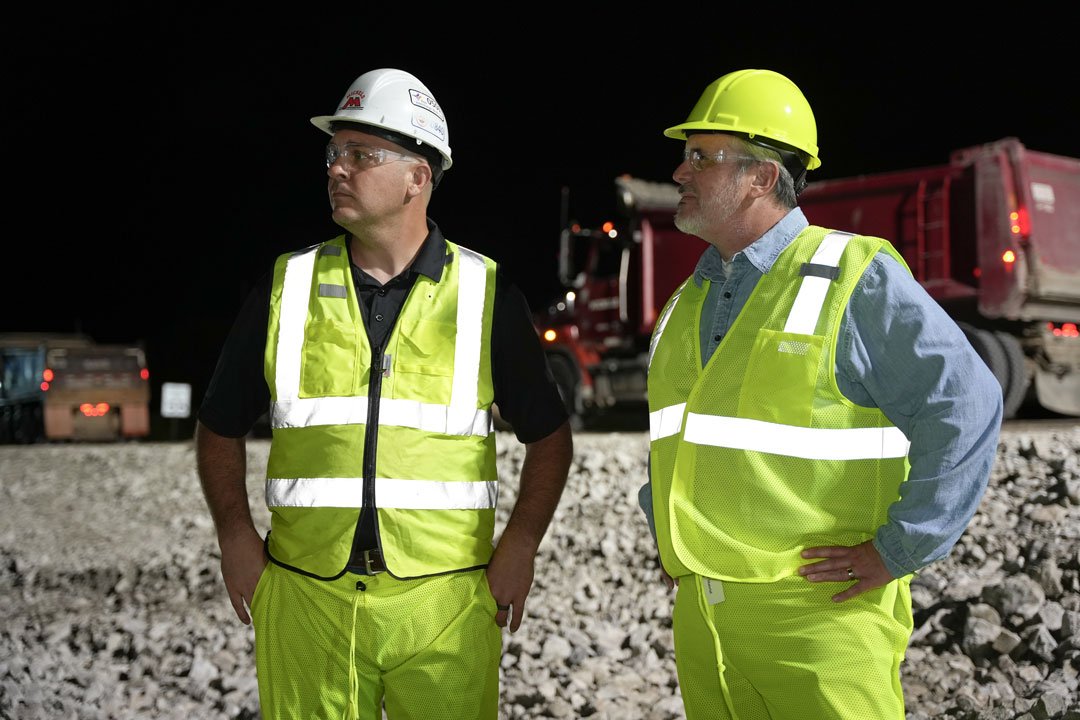
July 24, 2024
By Lane Kimble
GRAND CHUTE, Wis. — It was pretty easy to spot a group of five state lawmakers walking the median of I-41 Tuesday night near Appleton — what with their matching neon yellow reflective vests, pants, and helmets.
It was easy to spot their excitement, too.
“It’ll be a cool experience for them,” Michels Road & Stone Project Manager Nate Swankesaid shortly before guiding the group on a night work tour.
Swanke was right.
Over the course of 90 minutes, he and General Manager Zach Dittberner showed off a nearby Michels quarry, then escorted the group with WTBA staff right into the heart of a multi-year rebuild of 2.5 miles of Fox Valley interstate.
The tour generated a ton of questions and interest from the lawmakers as traffic whizzed past barrier walls and heavy machinery scooped rubble into dump trucks.
While crews will accomplish most of this project during the day, periodic night shifts are a must-do along a stretch of freeway that sees 70,000 vehicles daily.
“(We want the lawmakers to understand) the full, entire project, not just the ribbon cutting at the end. It’s the amount of time and effort and overall full circle coming through it at night… It’s not something everybody gets to see,” Swanke said.
WTBA of Tomorrow and Director of Government Affairs Elise Nelson is helping to organize this and five other site visits around the state this summer.
Tuesday night’s group included State Senator Eric Wimberger and State Representatives David Steffen, Michael Schraa, Shae Sortwell, and Nate Gustafson.
“It’s a little unsettling when you’re that close to the barrier – that’s a fact – and you certainly learn how dangerous it can be,” Wimberger said. “I learned a lot, (the tour) was pretty neat.”
This job is an initial portion of the massive 23-mile, six-year I-41 reconstruction and expansion between Appleton and De Pere.
When Michels and its subs are finished with this stretch in fall 2025, they’ll have done 280,000 yards of grading, moved 216,000 tons of stone, and handled 46,000 square yards of pavement.
“You do step back and say, hey, at one point in time, two years from now, three years from now, six years from now when the whole corridor is done, these 70,000 cars that drive this every single day will have a much better flow of traffic and they will hopefully have less accidents, be able to move more freely,” Swanke said.
“At the end, it’ll be worth it to everybody involved.”
